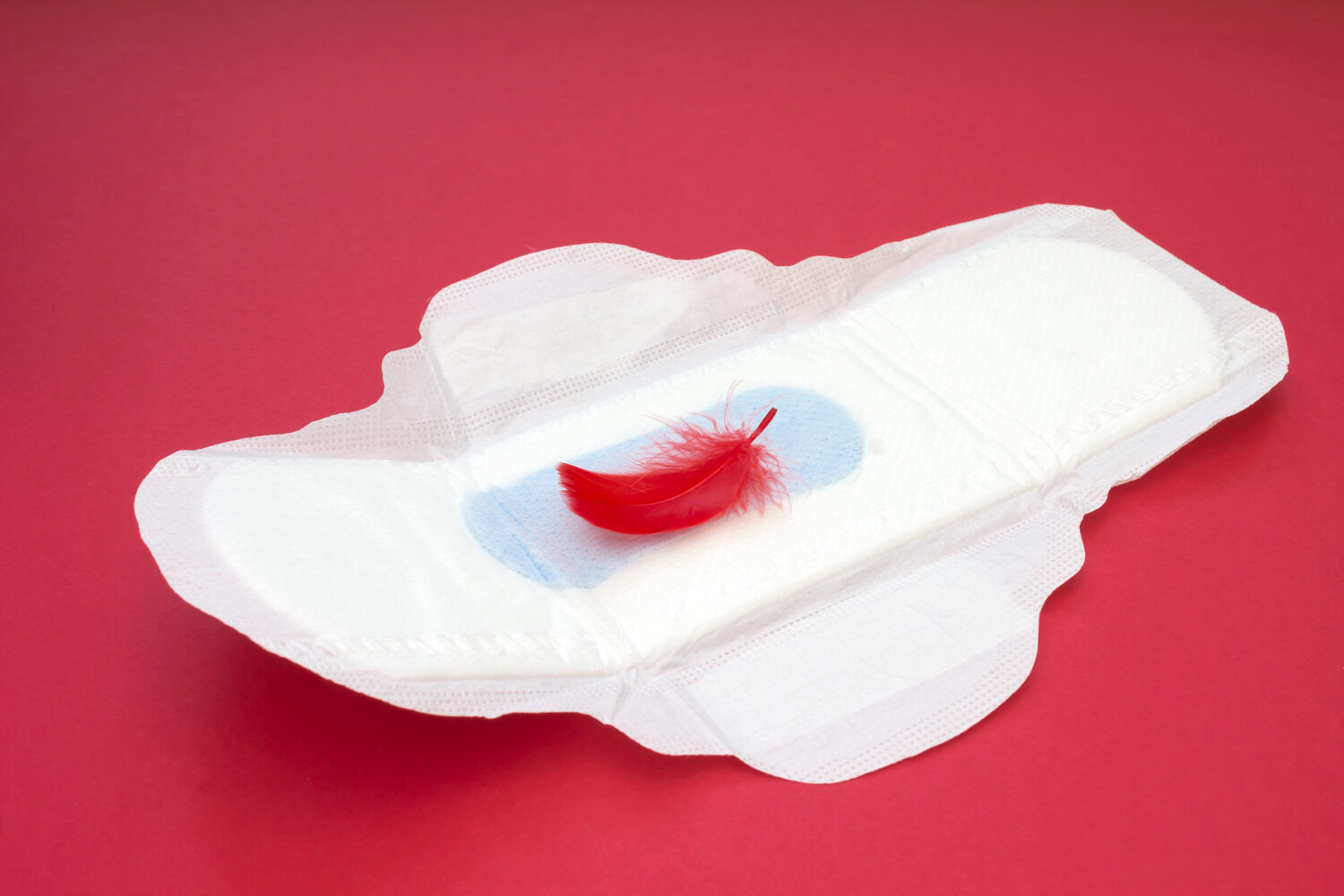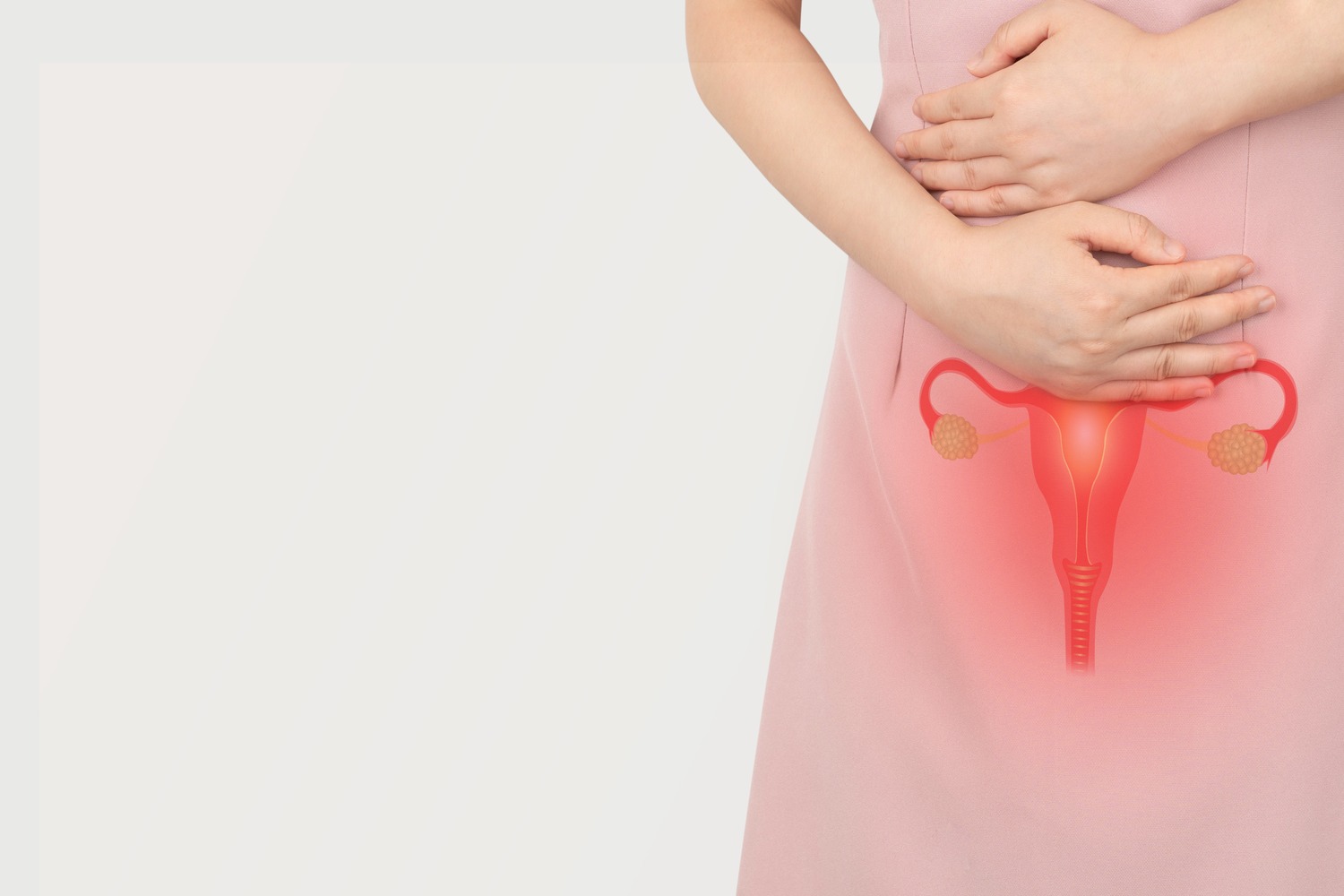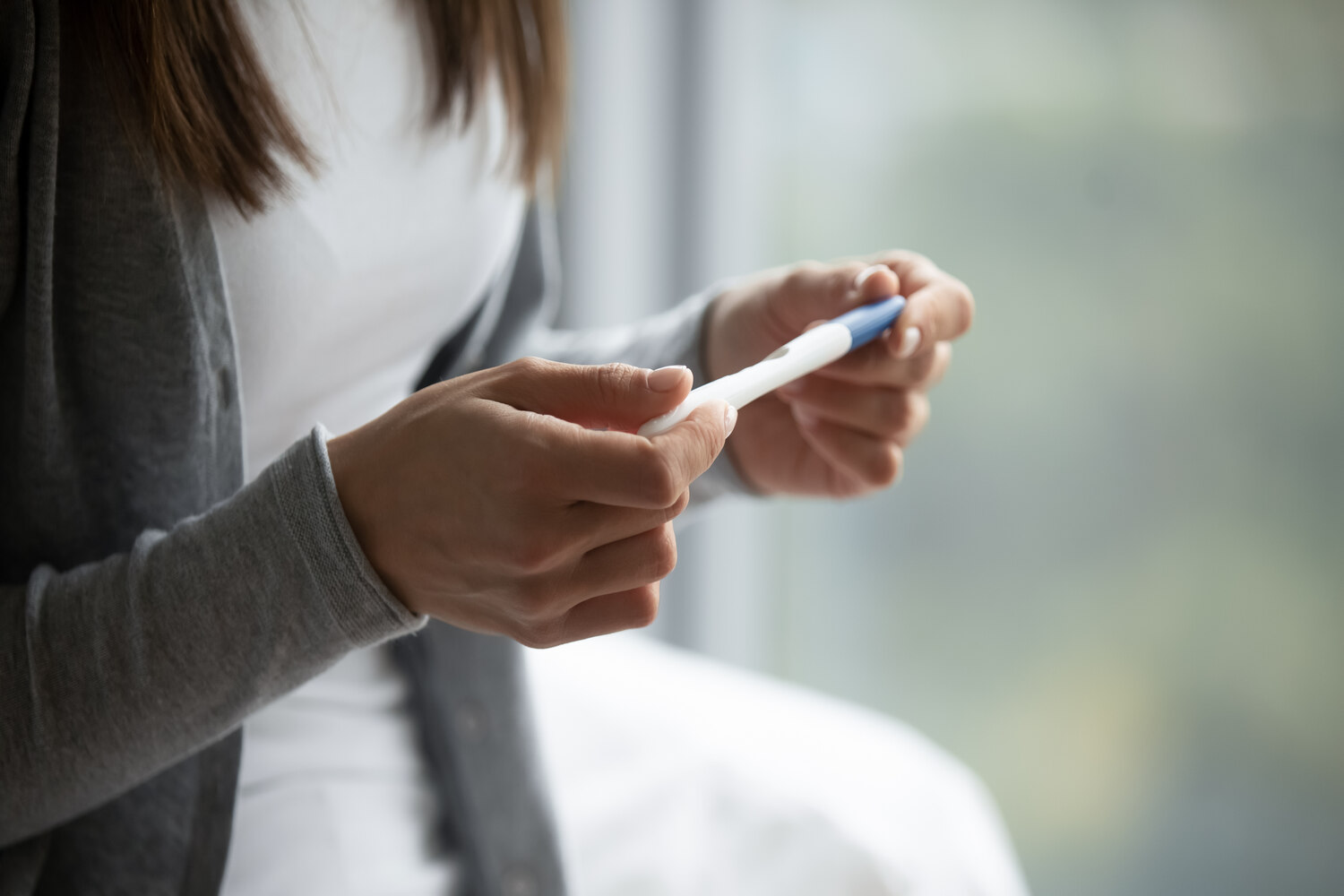
Ovulation is a mid-menstrual cycle phase marked by the release of the egg. The first half of the menstrual cycle involves preparing the uterus and the follicles for the growth and maturation of egg(s). The mature egg gets released ready to meet the sperm which facilitates a successful conception. Many women experience ovulation bleeding during this phase.
So, what exactly is this ovulation bleeding and why does it happen? Is this bleed normal? Here are some important facts to know and understand about ovulation bleeding.
In This Article
- What Is Ovulation Bleeding?
- Key Points About Ovulation Bleeding
- Causes of Ovulation Bleeding
- Associated Symptoms With Ovulation Bleeding
- Tracking Ovulation
- When in The Menstrual Cycle Does Ovulation Bleeding Occur?
- Common Signs of Ovulation Bleeding
- Can Women Who Experience Ovulation Bleeding Still Conceive?
- When to Consult With a Healthcare Professional?
- FAQ’s
What Is Ovulation Bleeding?
Ovulation bleeding, also known as mid-cycle bleeding or ovulation spotting, refers to light vaginal bleeding or spotting that occurs around the time of ovulation in a woman’s menstrual cycle (1).
Ovulation typically occurs in the middle of the menstrual cycle when a mature egg is released from the ovary and is ready for fertilization by sperm (2).
Key Points About Ovulation Bleeding

Here are some of the important factors and pointers about ovulation bleeding.
1. Timing
Ovulation bleeding usually occurs midway through the menstrual cycle, approximately 12 to 16 days before the start of the next menstrual period. This timing can vary among individuals and may not be present in every menstrual cycle.
2. Appearance
The bleeding is typically light and may range in color from pink to brown. It is generally much lighter than menstrual bleeding and may be noticed as a few drops of blood or light spotting.
3. Duration
Ovulation bleeding is usually short-lived, lasting only a day or two. It occurs around the time of the egg’s release and may coincide with other signs of ovulation.
4. Fertility Sign
Ovulation bleeding can be considered a fertility sign. It may indicate that a woman is in her most fertile period, making it a helpful marker for those trying to conceive.
5. Not a Concern in Most Cases
In many cases, ovulation bleeding is considered normal and not a cause for concern. However, if the bleeding is persistent, unusually heavy, or accompanied by severe pain, it’s advisable to seek medical advice to rule out any underlying issues.
Causes of Ovulation Bleeding
The exact cause of ovulation bleeding is not fully understood. It is believed to be related to hormonal changes, particularly the surge in estrogen that occurs just before ovulation. These hormonal shifts can affect the uterine lining, leading to some light bleeding (3).
Associated Symptoms With Ovulation Bleeding
Some women may experience other signs of ovulation along with ovulation bleeding, including changes in cervical mucus (becoming clear, slippery, and stretchy), mild pelvic pain or twinges (mittelschmerz), and a slight increase in basal body temperature (4).
Tracking Ovulation
![]()
Women interested in tracking ovulation can use various methods, including keeping a menstrual calendar, monitoring changes in cervical mucus, using ovulation predictor kits, and paying attention to symptoms like pelvic discomfort. Additionally, charting basal body temperature can help confirm the timing of ovulation (4A).
[Read: Important Facts About Ovulation]
When in The Menstrual Cycle Does Ovulation Bleeding Occur?
Ovulation bleeding typically occurs around the time of ovulation, which is generally in the middle of the menstrual cycle. In a standard 28-day menstrual cycle, ovulation usually takes place between the 12th and 16th days. However, the exact timing can vary among individuals and may be influenced by factors such as cycle length, hormonal fluctuations, and overall menstrual cycle regularity.
a. Menstrual Cycle Length
Ovulation bleeding is commonly observed in the days leading up to, during, or immediately after ovulation.
For those with a 28-day cycle, ovulation is likely to occur around days 14 to 16.
For women with shorter or longer cycles, the timing of ovulation may occur earlier or later in the cycle.
b. Ovulation Prediction
Ovulation can be predicted by various signs, including changes in cervical mucus, a surge in luteinizing hormone (LH) detected by ovulation predictor kits, and a slight increase in basal body temperature.
This bleeding may coincide with these other signs of ovulation.
d. Individual Variations
It’s important to recognize that the exact timing of ovulation and ovulation bleeding can vary widely among women.
Factors such as stress, illness, or changes in routine can influence the menstrual cycle and, consequently, the timing of ovulation.
e. Fertility Window
Ovulation is a key component of the fertile window—the time when a woman is most likely to conceive.
Understanding the typical timing of ovulation, along with signs like ovulation bleeding, can be valuable for those trying to conceive.
It’s essential for individuals who are actively monitoring their menstrual cycles or trying to conceive to pay attention to their body’s unique signals and consult with healthcare professionals if they have specific concerns or questions about their reproductive health.
Common Signs of Ovulation Bleeding

Ovulation bleeding is often accompanied by various signs that indicate the occurrence of ovulation. Here are common signs associated with ovulation and ovulation bleeding:
1. Changes in Cervical Mucus
Changes in the consistency of cervical mucus occur around ovulation (5). Cervical mucus becomes clear, slippery, and stretchy, resembling the texture of egg whites.
2. Pelvic Pain or Twinges (Mittelschmerz)
Some women experience mild pelvic pain or twinges on one side of the lower abdomen (6). The pain is typically short-lived and coincides with ovulation.
3. Basal Body Temperature (BBT) Rise
Basal body temperature tends to rise slightly after ovulation (7). Charting BBT over the menstrual cycle can help confirm the timing of ovulation.
4. Increased Libido
Some women experience an increase in libido or sexual desire during ovulation (8). The surge in hormones, including estrogen, can contribute to heightened sexual arousal.
5. Breast Tenderness
Breast tenderness or sensitivity may occur as a result of hormonal changes. This symptom can occur during the ovulatory phase.
6. Heightened Senses
Some women report heightened senses, including a more acute sense of smell, during ovulation. Hormonal changes may contribute to these sensory changes.
7. Increased Energy And Well-being
A boost in energy levels and an overall sense of well-being may be experienced. Hormonal changes, particularly the surge in estrogen, can contribute to increased vitality.
It’s important to note that not every woman experiences ovulation bleeding, and the intensity of symptoms can vary. Monitoring multiple signs, such as changes in cervical mucus, pelvic pain, and basal body temperature, can help individuals identify their fertile window and optimize their chances of conception if trying to conceive. If there are concerns or irregularities in the menstrual cycle, consulting with a healthcare professional is advisable.
Can Women Who Experience Ovulation Bleeding Still Conceive?

Yes, women who experience ovulation bleeding can still conceive. In fact, ovulation bleeding is considered a normal part of the menstrual cycle and is often associated with the most fertile period.
a. Indicator of Fertility
Ovulation bleeding is often seen as a positive fertility sign. It indicates that the ovaries have released an egg and this is the time when conception is most likely to occur.
b. Fertile Window
Ovulation bleeding is an indication that a woman is likely in her fertile window—the days in the menstrual cycle when conception is most probable. Sperm can survive in the reproductive tract for several days, so having intercourse in the days leading up to and during ovulation increases the chances of conception.
c. Timing of Conception
Conception is most likely to occur within 24 to 48 hours after ovulation. Since sperm can live for a few days in the female reproductive tract, having intercourse in the days before ovulation can also lead to pregnancy.
d. Monitoring Fertility Signs
Women who are actively trying to conceive may find it beneficial to monitor various fertility signs, including changes in cervical mucus, basal body temperature, and the occurrence of ovulation bleeding.
When to Consult With a Healthcare Professional?
If a woman experiences difficulties conceiving or has concerns about her menstrual cycle, it’s advisable to consult with a healthcare professional.
Testing and evaluation can help identify any underlying issues and provide guidance on optimizing fertility.
While ovulation bleeding can be an encouraging sign of fertility, it is important to recognize that fertility is a complex process influenced by various factors. Couples who are actively trying to conceive may benefit from tracking multiple fertility signs and engaging in regular, timed intercourse during the fertile window. If there are challenges or concerns related to fertility, seeking guidance from a healthcare professional or a fertility specialist is recommended.
FAQ’s
1. What Does Ovulation Bleeding Look Like?
Ovulation bleeding happens mid-cycle to coincide with ovulation. You can expect a pink or light brown colored spotting or a few drops of blood that can last for a day or two.
2. How Many Days Will Ovulation Bleeding Last?
Ovulation bleeding will last for one or two days. It is usually seen in the form of light spotting that can be pink or brown in color. In case of heavy bleeding, you may need to check with your gynecologist to make sure everything is fine and there are no underlying health issues causing the bleed.
3. How do You Stop Ovulation Bleeding?
Ovulation bleeding is usually mild and resolves on its own in a day or two. It is seen in some women and does not cause or indicate any health issues. In case of any concerns, you can check with your gynecologist for advice.
References
- Mechanism of Ovulation Bleeding | European Journal of Endocrinology | Oxford Academic https://academic.oup.com/ejendo/article-abstract/23/1/33/6957852
- Physiology, Ovulation – StatPearls – NCBI Bookshelf https://www.ncbi.nlm.nih.gov/books/NBK441996/
- Intermenstrual Bleeding | Gynecology Clinics Illustratedhttps://www.worldscientific.com/doi/10.1142/9789813229044_0004
- Physiological Signs of Ovulation and Fertility Readily Observable by Women – PMC https://www.ncbi.nlm.nih.gov/pmc/articles/PMC6081768/
- Cervical mucus patterns and the fertile window in women without known subfertility: a pooled analysis of three cohorts – PMChttps://www.ncbi.nlm.nih.gov/pmc/articles/PMC8487651/
- Mittelschmerz – StatPearls – NCBI Bookshelfhttps://www.ncbi.nlm.nih.gov/books/NBK549822/
- Physiology, Ovulation And Basal Body Temperature – StatPearls – NCBI Bookshelf https://www.ncbi.nlm.nih.gov/books/NBK546686/
- Fertility in the cycle predicts women’s interest in sexual opportunism – ScienceDirecthttps://www.sciencedirect.com/science/article/abs/pii/S1090513810000504
